
If your goal is to break the the one-minute barrier at Tsukuba Circuit, hardcore engine modifications and downforce-generating aerodynamics are two of the most common ways to get you there.
However, if you’re not packing a lot of power under the hood, shedding weight can be hugely beneficial. Case in point, Takumi Hayashi’s carbon fiber-clad AE86 Levin.

Dubbed the Carbon Junkie, Hayashi-san began transforming his Levin around six years ago, learning the craft of manipulating carbon fiber and eventually applying it to his own car.

Now, virtually every panel has been replaced with dry carbon in the quest to reduce weight.
Like most time attack cars, Hayashi-san’s AE86 features a massive front splitter and a huge rear wing, but everywhere you look are custom aero touches.

Yokohama Advan A050 semi-slicks in 225/45R16 sizing at all four corners provide substantial grip, while forged RAYS Volk Racing TE37Vs provide a lightweight solution for the wheels. The bronze finish complements the dry carbon exterior and truly pulls the aggressive exterior together.
This being a pure race car, the interior is totally stripped out with just one seat and the bare essentials. A custom carbon fiber dash houses a digital RacePak display, and there’s a carbon console for all the switchgear.
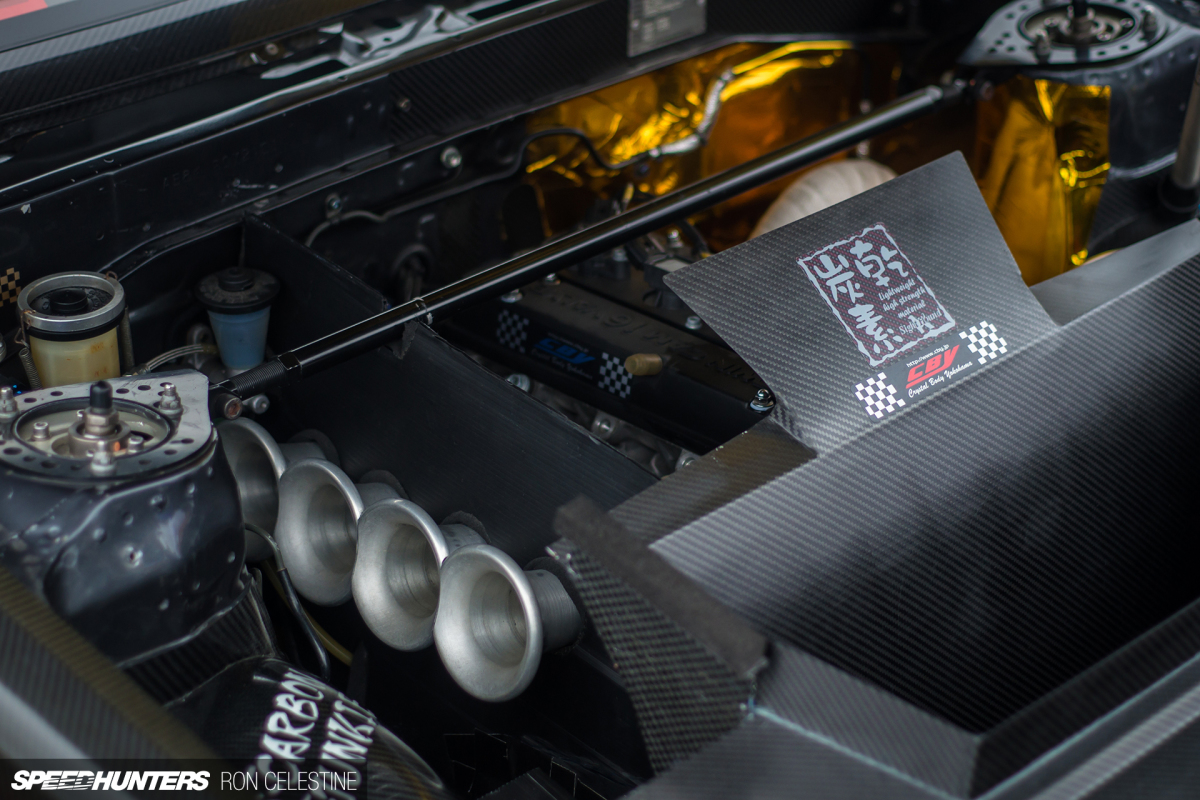
Under the hood, the AE86 stays true to the 16-valve 4A-GE in naturally aspirated form, but this one’s been worked over from top to bottom to now output 220PS. And yep, there’s more carbon fiber to be found in the engine bay too!
Although 220PS might not seem like that much power in the modern era of time attack, when you combine the aerodynamic aids and the fact the car now weighs a little under 800kg, Hayashi-san’s Hachiroku is good for a 58.996-second run around Tsukuba, which you can watch by clicking the video above.
Ron Celestine
Instagram: celestinephotography
More stories from Japan on Speedhunters


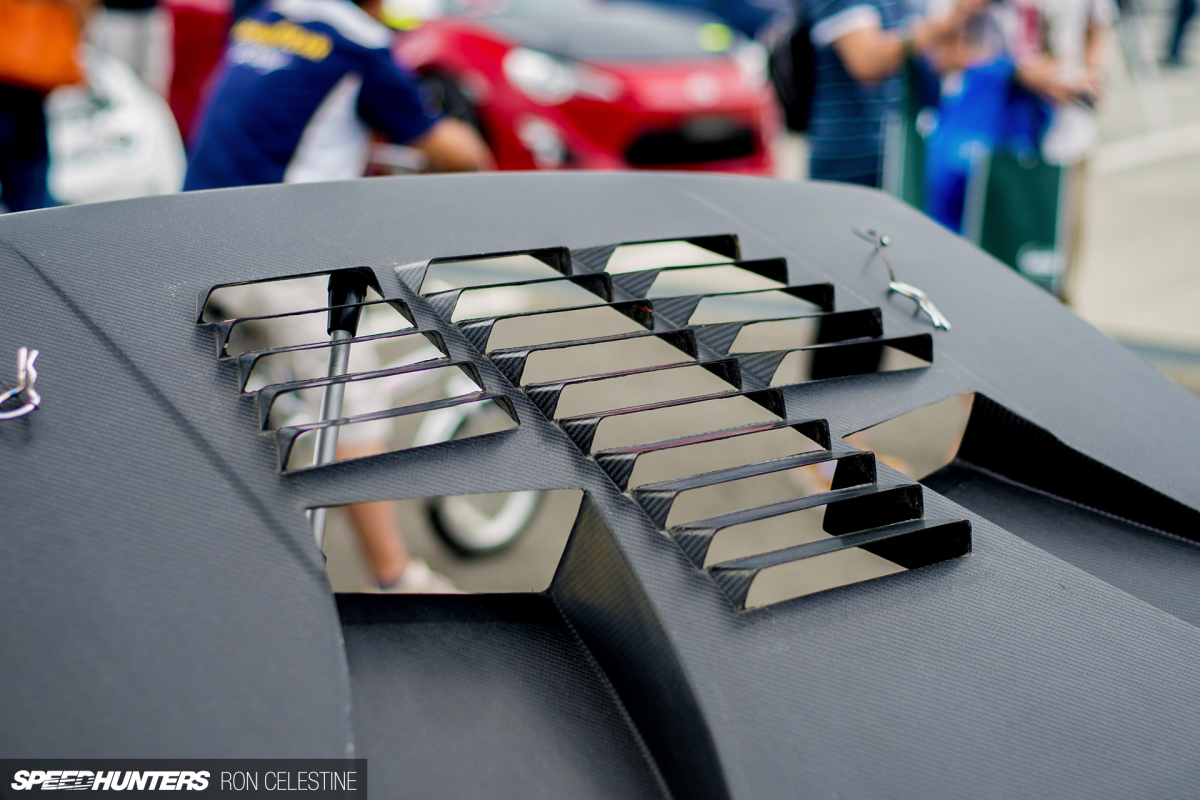
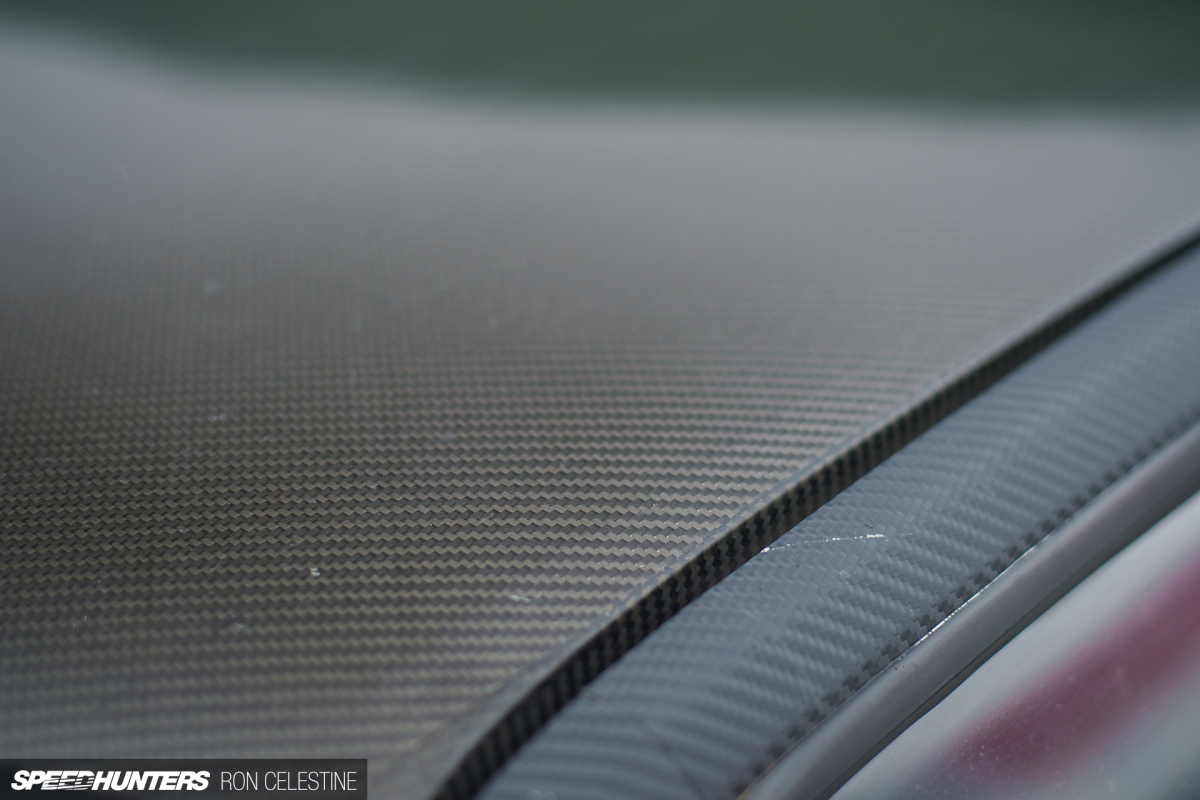
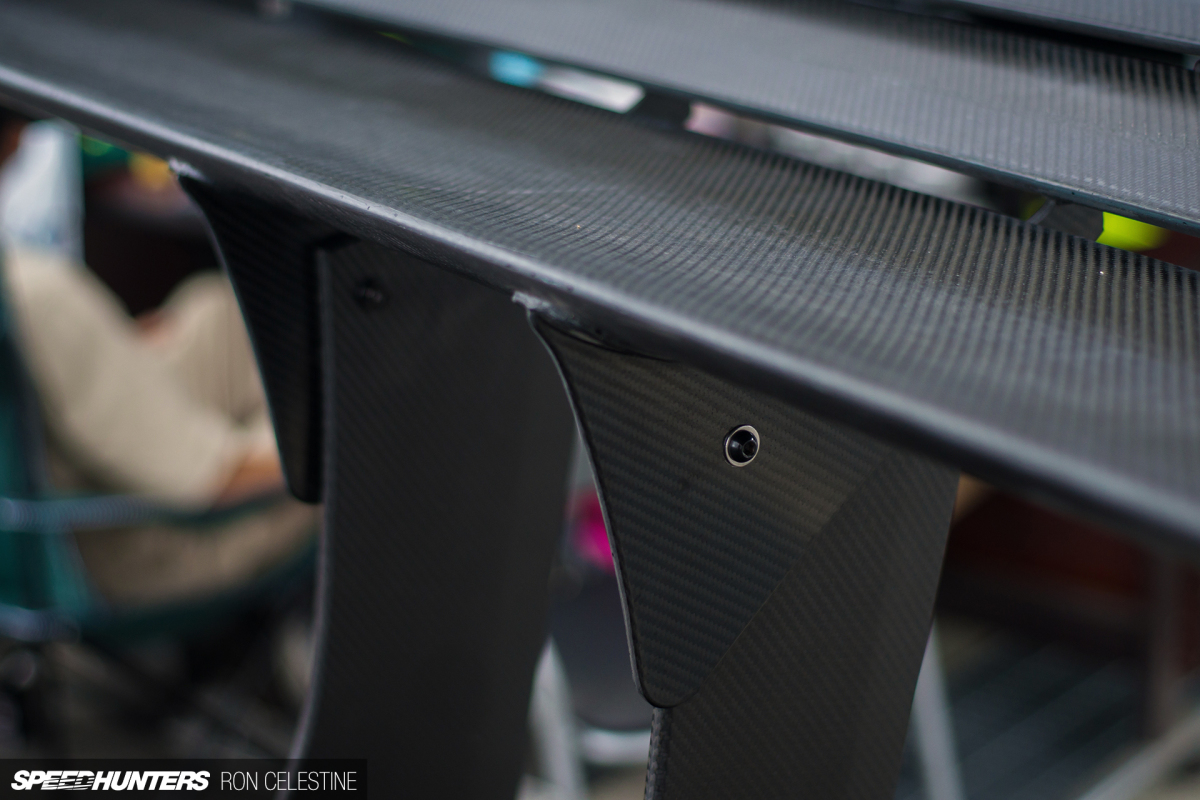
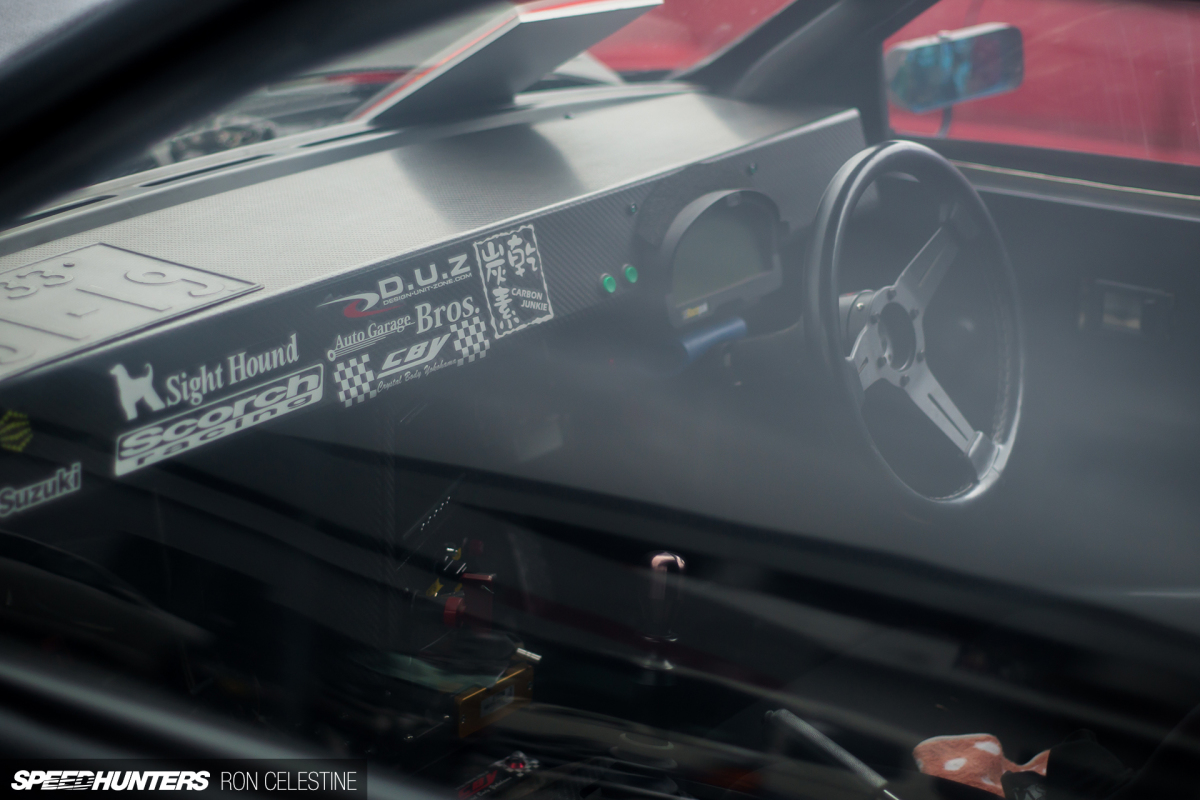
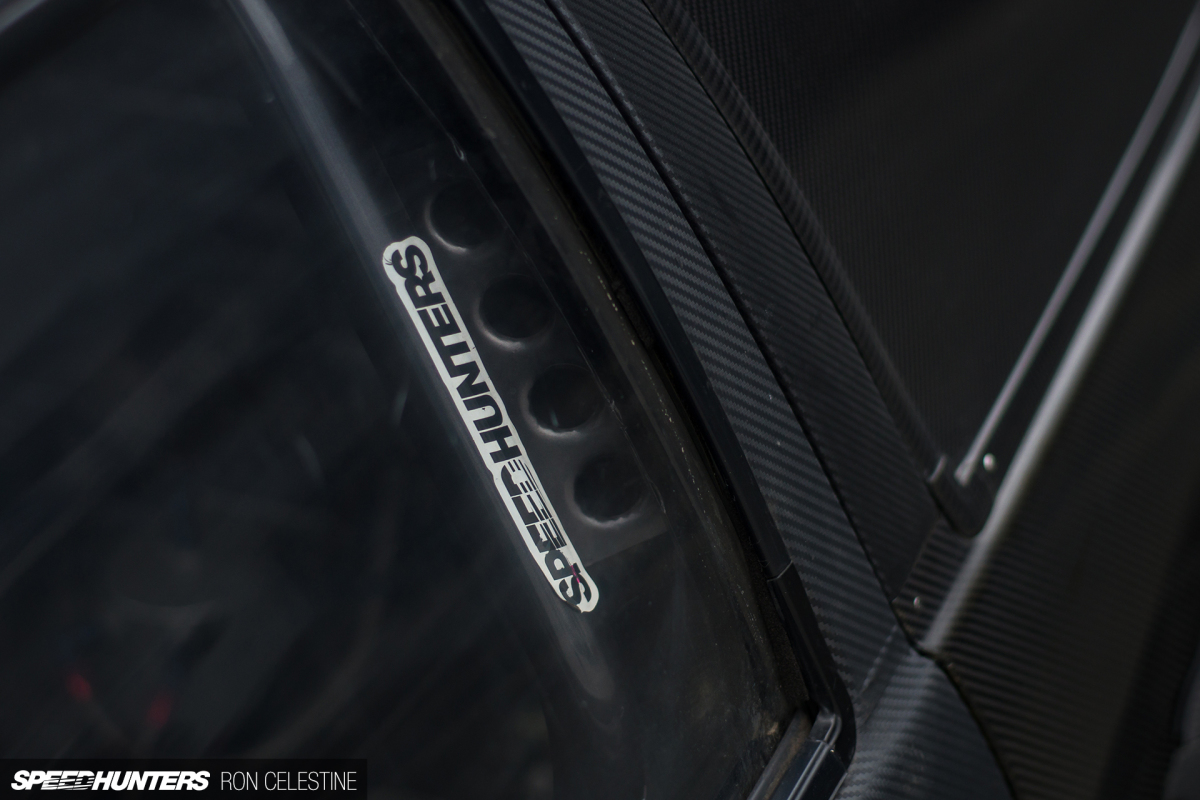





That is is one positively badass way to get from A to A...
I also dream of one day buying an (even older) vintage car and slowly turning it into carbon.
Ooh what do you have in mind?
Well, it's more of a "What if?" right now coz
1) I gotta end up in a country that has these vintage cars and lets me modify them appropriately
2) I've just begun college
But yea, that aside it's gonna be an Alfa Romeo Spider/BMW 2002/Porsche 914?Vintage British Roadster (in order of preference) with lot's of body colored carbon bits, minor aero improvements and loads of engine modding (no turbos). Any other similar cars I should dream of?
Nice! A lot of purist might get upset by that haha. Honestly old vintage cars are my weak point but definitely your first point is going to play a huge roll in what you can get your hands on.. or just pay a lot of money to get what you want lol but that might be unreasonable
"Dry carbon"? As a composite laminator I the whole idea of dry carbon is a misnomer. If "dry" there would not be enough resin. So say what you mean. Is it that the fiber is prepregnated or are you referring more simply to the fact that it has been given a matt finish? Nice article all the same.
Dry vs wet isn't about the carbon itself. It's all about the poor sap who gets paid to do it… are his gloves wet, or dry? I've done both wet and dry lay ups - and a prepreg autoclave setup is like working with sticky tape. Your gloves stay dry. As in - 'not wet'. Conversely, a liquid epoxy layup is a wet, smelly mess. Your'e trying so hard to sound smart, yet your comment was so very, very dumb.
Bakayaru, So "wet or dry" is all about the gloves? I am not about to believe this project was completed in prepreg, unless the builder has access to outdated material (such that I have in my own freezer) and the (really big) autoclave that you mention (actually prepregs generally only need an oven for curing. "Liquid epoxy", vynlester and other such resins need not be a wet/smelly mess if you care to setup your work for resin infusion. "Dry look" is indeed about finish and the correct word is "matt", just as a "gloss look" is not a wet finish. I am far from "smart" and very prepared to be called "dumb", there is so much I don't know,
Thank you! Glad you enjoyed the article besides that 'little misnomer' The carbon fiber is pre impregnate with resin which means less epoxy is necessary in the overall process. This gives it that matte finished. When compared to 'Wet' carbon fiber, more epoxy is used to bind the fibers together which gives it that glossy look at the end of it all. I'm sure the term Dry carbon is a relatively known terminology giving the misnomer. Maybe it should be called 'Dryer' carbon o.O?
Misted carbon? Moist carbon?
Hehehe moist
Dry Carbon refers to the fact that during manufacturing, the least amount of epoxy necessary to make the Carbon panel is used. Therefore it can be more than 50% lighter, and still have the same strength. It also has a matte finish because it is not finished with a top coat of epoxy, it is just left raw, or Dry. I understand that completely dry carbon would be a misnomer because you HAVE to use some epoxy to hold it together. But the term Dry carbon is pretty self explanatory, and should be, to someone who works with composites.
Yes I am fully aware of how the term is being thrown around to describe "carbon". Unfortunately the reference to "dry" does come up even within the industry now and then. You say yourself that the phrase is a misnomer. My point was that the writer should not be confusing the lay person.
Lets nit-pick on minor wording and details rather than enjoy the great cars that are being displayed on this site. I am a simple man (lay person if you will) but I have found the difference between dry and wet carbon to not be confusing.
Eh, I'm a "lay person" when it comes to carbon fiber, and I didn't care enough to research whether he was right or wrong. To me, carbon fiber is carbon fiber.
I figured Ron knew what he was talking about because I think his bio said he was a rocket engineer or something similar.
Pretty sure the speedhunters rocket scientist knows the differences in carbon fibre.....
Err.. Dry carbon means it was prepregnated with epoxy/resin that cures at over 150-170C. It's usually vacuum-bagged and then cured in autoclaves. Which means, the guy has to have his own autoclave to call it "dry carbon". If he had laid the epoxy be hand even a small amount, that means it was "wet laid", i.e. "wet carbon" or hand-laid as opposed to dry. The difference in weight is minor, but stiffness and resistance to cracking is different. A wet laid can be more stiff, but dry carbon is more crack resistant.
In either way, 800kg is A LOT for such an approach. I think it's possible to get to 650 kg point without any sort of carbon.
It is absolutely possible to cure prepreg using just a oven.
@Alex well maybe Hayashi-san doesn't own an autoclave, doesn't mean he can't borrow one from someone else! If you noticed the dashboard photo it had the "Scorch Racing" sticker, which could mean he did the dry carbon there, same as Under Suzuki.
What an insanely well behaved RWD car. Hardly any oversteer.
Cliche but it really looks like the car is riding on rails. Hardly any steering input and the car just moves where he wants it.
That's one sick corolla
Blog "Naritadogfight" done an awesome article post on this bloke. Incredible car
One sick ass car through and through.
You guys need to find that old ELF CRX and do a feature on it. Old 80s/90s Japanese time attack cars are the best, literally 4 wheels and an engine.
The SS Works CRX? That thing was crazy for the time. I remember drivers saying they didn't feel safe in the car, due to so much of car having been removed.
I love the car, especially the sticker headlights!
As hardcore as it can get.
That Levin is brutal. A+++
Jesus Christ that thing behaves well in the corners.
Ah yes, thank you for the video. Love me the sound of a tuned racecar!
The Narita Dog Fight saw it first though.
Interesting article, and cool project car for sure.
My critique is on the writer, who like most other "Speedhunters" makes mis-informed claims and uses incorrect terminology. Maybe this is in an effort to impress others or think they are in the "in crowd" by gaining access to these "amazing" projects?
All the carbon fiber work on this project is cool, but many others can make composite parts in their garage. "Dry carbon" is not a real thing in the composites world when talking about a finished part. In the car enthusiast world, "dry carbon" implies pre-preg was used and cured under vacuum in an oven or autoclave. Highly doubtful that pre-preg was used on this project, as most of the parts would need a relatively large autoclave to cure, which is very expensive to run per hour, and pre-preg needs to be refrigerated until it is used, and also cost thousands of dollars per roll.
If this project was made with wet layup or resin infusion, then stop the BS and call it what it is.
Why is it 'highly doubtful?' that prepreg was used? When I worked on gravity-cars out of full prepreg carbon, we built our own ghetto autoclave using heat lamps, a strong vacuum pump, and strong pvc sheets. It's just heat and pressure. You don't need a metal mould or vacuum chamber. A giant roll of cold prepreg only cost us $1200… kept in a cheap mini-fridge. You sound like a complete tool, Patel.